I have no idea why I’ve never thought about this before.
I’ve tried for years to get spectacular shots of ducks (Cinnamon Teals especially but other species too) taking off from the surface of the water. I’ve nearly always failed, in large part because their takeoff is so fast and explosive and they generally don’t signal their intentions beforehand so I always cut off part of the bird or miss it entirely. But I learned something from this Northern Pintail yesterday morning in northern Utah.
1/4000, f/6.3, ISO 500 Canon 7D Mark II, Canon EF 500mm f/4L IS II USM + EF 1.4 III Extender, not baited, set up or called in
The male Pintail had been basking in the sun on a sloping spit of land between two parts of a shallow pond with three other males when two of them unexpectedly took off. I hoped that if this one followed suit I might get lucky with a takeoff shot so I made sure I had sufficient shutter speed and waited with my very itchy trigger finger for it to happen . I tried to leave plenty of room in the frame above the bird to give me a better chance to get its entire body in frame when it exploded into the air but I didn’t have high hopes because I didn’t expect to be able to anticipate the liftoff.
1/3200, f/6.3, ISO 500 Canon 7D Mark II, Canon EF 500mm f/4L IS II USM + EF 1.4 III Extender, not baited, set up or called in
But I seldom attempt liftoff shots of ducks from land so I didn’t even think about the fact that it would be able to push off against the solid ground (as opposed to water) so it would squat before lifting off, signaling its intentions. It turns out I had plenty of time to get this squatting shot…
1/2500, f/6.3, ISO 500 Canon 7D Mark II, Canon EF 500mm f/4L IS II USM + EF 1.4 III Extender, not baited, set up or called in
and another as he was opening his wings and pushing off…
1/4000, f/6.3, ISO 500 Canon 7D Mark II, Canon EF 500mm f/4L IS II USM + EF 1.4 III Extender, not baited, set up or called in
before he became airborne. I really like this photo…
1/4000, f/6.3, ISO 500 Canon 7D Mark II, Canon EF 500mm f/4L IS II USM + EF 1.4 III Extender, not baited, set up or called in
but this one is my favorite.
1/4000, f/6.3, ISO 500 Canon 7D Mark II, Canon EF 500mm f/4L IS II USM + EF 1.4 III Extender, canvas added for composition, not baited, set up or called in
And I actually got a third flight shot without clipping any body parts although I did have to add canvas for composition because the bird was too close to the edge of the frame. I’m pretty embarrassed that I’d never realized that a duck taking off from land would signal its intentions by squatting and pushing off to get airborne – thus giving me plenty of time to get my burst going soon enough.
I may be a slow learner but this was a lesson I won’t soon forget.
Ron
Note: This series illustrates why I always try to err on the side of too much shutter speed rather than too little for potential action shots. I shoot in aperture priority which means that my shutter speed varies considerably as the brightness of my subject, setting and background changes. Here my shutter speed varied between 1/4000 and 1/2500 during the process of takeoff. I wanted an absolute minimum of 1/2500 during the takeoff so it’s a good thing I started out as high as I did or I’d have had considerably more motion blur in some of the images. Those wings are fast!


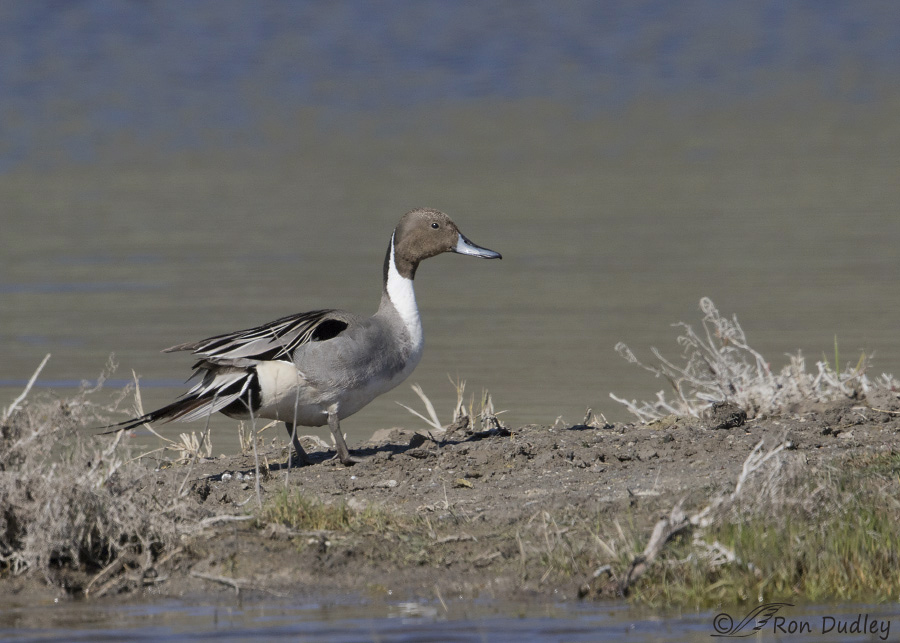
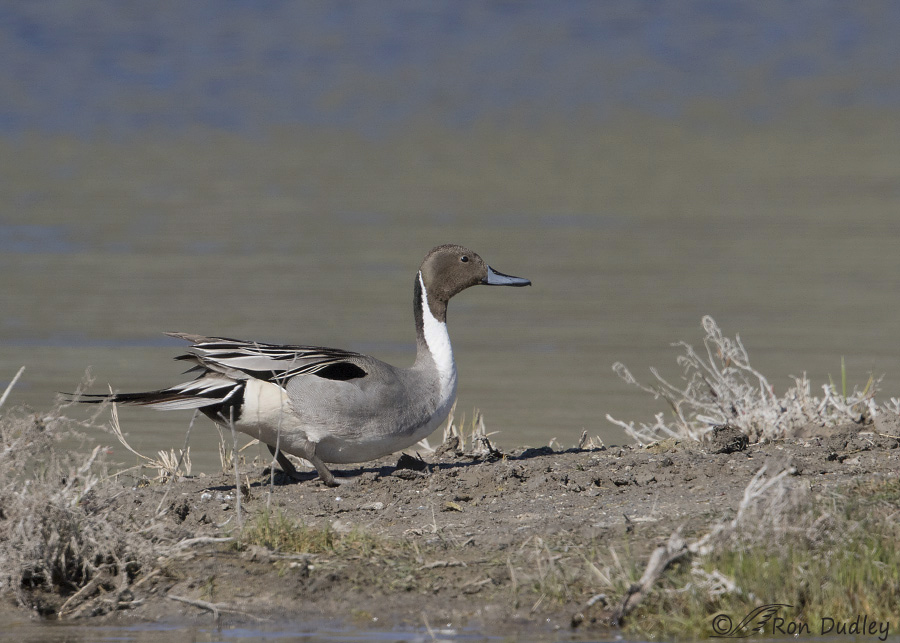
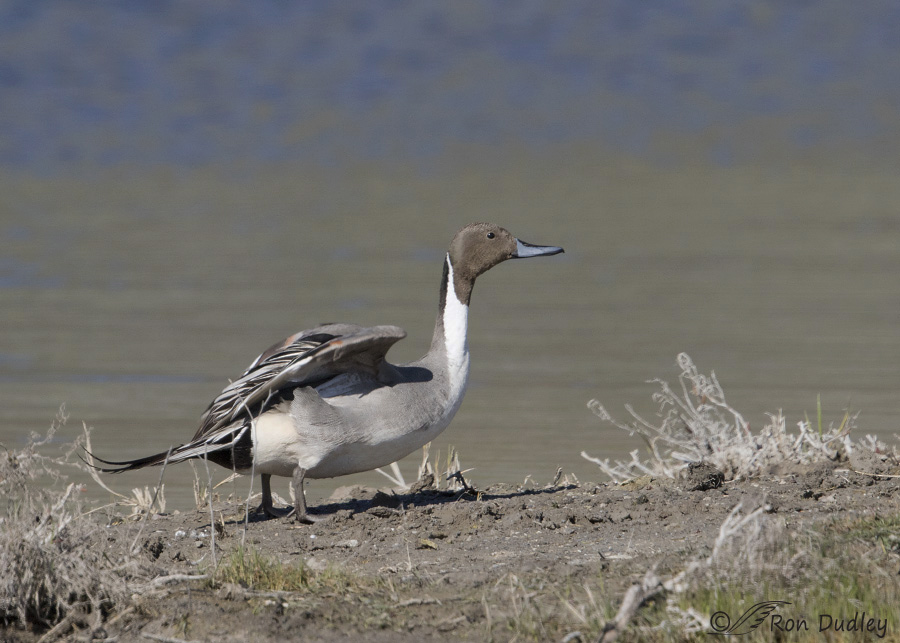
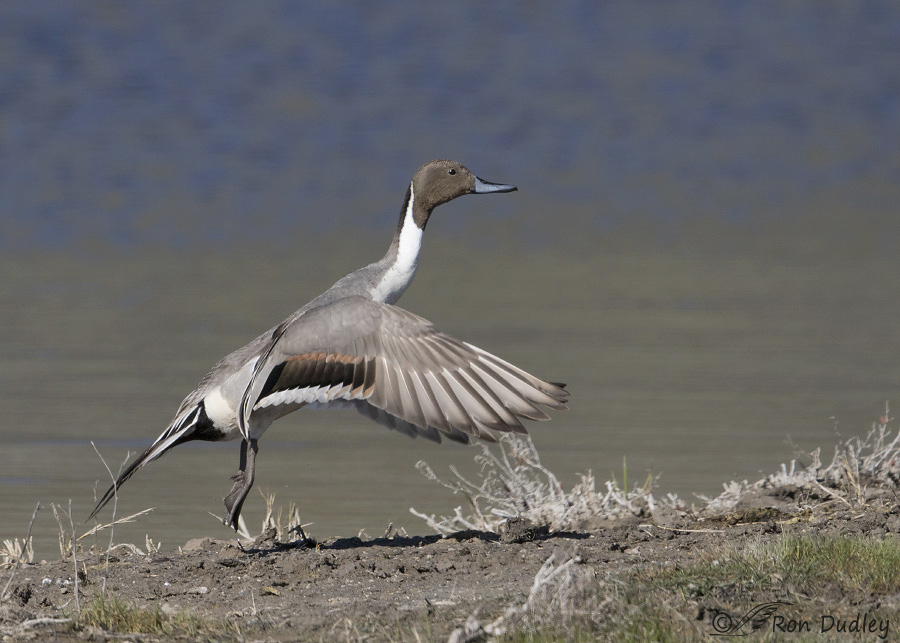
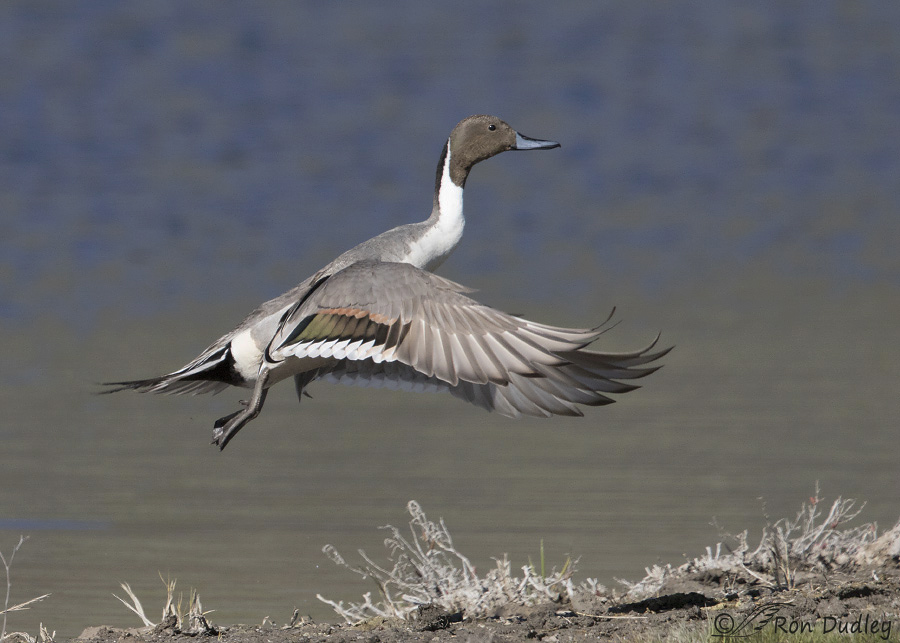
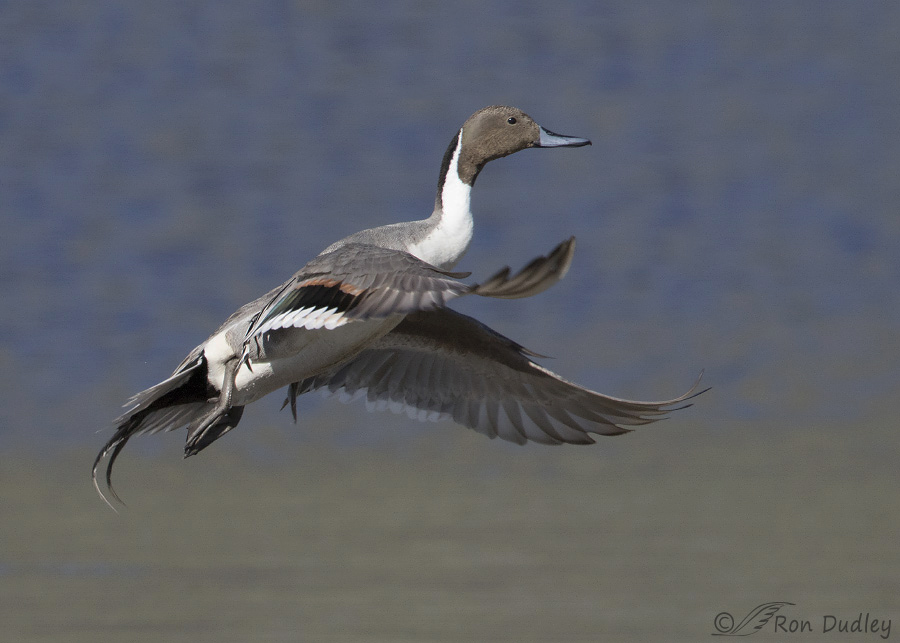
Absolutely beautiful series. I’m glad you were able to get these takeoff shots, and hope that you can eventually get water takeoff shots.
Ron,
Great shots again and I appreciate the “geek” questions (I have wondered the same things before) and thoughtful (I would be careful to ever refer to you as “geek”) and instructional responses from you. Very helpful. I have tried auto ISO and found it to be too “lenient” with the top end ISO. I have also too often started out with a good shutter speed but hadn’t noticed in AP that same SS will fall below adequate, hence more blurring. That is an adjustment I can make. Thanks again.
Stephen
What a cool story Patty! Happy birthday to Tommy and YAY for Cindy!
Great images and a useful lesson on the push-off from land Ron. Thanks!
Thank you, Ed.
Ron – When taking these photos in aperture priority, is your ISO set to auto, or do you manually set it? And if it’s set to “auto”, do you adjust your settings in the camera to ensure it doesn’t go above 800?
Follow on question: Why shoot in aperture priority? I shoot in manual everything and oftentimes find I do not get the exposure correct…especially if the light changes during a burst. My apologies if you’ve already covered this elsewhere. Thanks – Zaph
Zaphir, I always set my ISO manually. I want control over it.
I shoot in aperture priority largely because I know it best. Each method has its advantages and disadvantages but I know AP well enough that it’s second nature to me. I don’t even have to think about it in the field because how it works is now “muscle memory” and automatic. IMO the most important thing about choosing one of the methods is to just pick one and learn how it works so well that everything becomes almost automatic in the field. For me that method is AP but for others it’s manual. And none of the methods are perfect or foolproof.
Late to the party, Ron, but OH MY, OH MY, OH MY! Northern Pintail is such a beautiful bird and this series is simply amazing! Well done and many thanks!
I can tell you like them, Diane. That makes me happy.
Been my experience, that just about all ducks signal before they take off. I would say 90% of the time they shake their head before takeoff.
That hasn’t been my experience anywhere near 90% of the time, though I have seen it happen – especially when they’ve recently had their head underwater. And I do notice occasional signals of other types but too often it happens too long before they actually take off – when they’re only thinking about it.
Some of those realisations can be a tad embarrassing. As in ‘how long did that take me????’ (yes I am speaking from experience). But you got there. And some incredible shots too.
To coin a phrase, better late than never! Thanks, EC.
HAHA! I’m often right there with you with those tardy “Well DUH!” moments! Those things that are blatantly obvious but just don’t occur to you until all the mental ducks are in a row and the light bulb illuminates in your mind 🙂
As usual, just spectacular shots and engaging text!
Thanks, Laura. Yeah, sometimes we get the difficult stuff and miss the obvious…
That last shot has to be one of the most beautiful images of a duck ever!!! Can’t even imagine how it could be better ….
Thanks, Patty. I like that one too but personally I prefer the second to the last. Different strokes…..
I am sorry Ron but you have waken the geek in me with your explanation to Frank Sheets.
Please try to follow me … You are on a road, you spot a bird. After positioning your car in the best angle and since there is almost no light because it is dawn what do you do first? Increase your ISO (let’s say too 800) and then see what’s the SS value or you open the diaphragm instead? Or you do both in order to achieve a value that you already have in mind?
I noticed that most of the time you shoot f/6.3, and since your lens opens to f/4 regarding my example why did you not use that value? Because of the depth of the field?
I apologize but this is important for me.
Thank you in advance.
Don’t apologize for asking questions, Jorge. I’m happy to answer them.
A. In the situation you describe I’d first change my ISO to see if I could get the minimum shutter speed I’m after. If I couldn’t get it without going above ISO 800 I’d then also change my aperture to see if that worked. If I had to I’d go above ISO 800 but I don’t like to with the Mark II. And sometimes there’s simply no way I can get the SS I’d like.
B. I can’t go to f/4 with the teleconverter attached using my cropped frame camera – f/5.6 is my limit. I’ll use 5.6 if I have to but it sure limits DOF when I’m close to the bird.
Thank you very much for your explanation.
It will be of great value to me, that’s for sure.
Thank’s again Ron.
You’re welcome, Jorge.
Such a beautiful series, Ron. I enjoy your pictures and narratives every day.
Thanks very much, Susan.
I’ve noticed on several occasions that a duck will turn into the wind, not unlike an airplane, in preparation for takeoff. This has alerted me to a possible photo opportunity. Have you observed the same?
Absolutely, I notice it often, Nick. Larger raptors do it much (perhaps most) of the time. That’s something I’ve mentioned often here on Feathered Photography.
And in a stiff breeze most perched birds will face into the wind to lower their wind profile (birds are very light and blown around easily). I take this into account when I’m approaching a bird in my pickup and adjust where I stop accordingly so I’m at least broadside to the bird or preferably a little in front of it (if the light angle is right). That gives me the best chance at a nice takeoff shot.
Beautiful, you even caught the iridescence in the wing in the 5th shot!
That’s a pretty neat speculum, isn’t it, April!
Your photos made me feel as though I were doing the flying; you are a master at your craft. Thank you.
I don’t know about that but I appreciate your confidence in me, Karen. Thanks.
A wonderful series..The closer to airborn that guy got, the longer his body looks!!! And the farther back his legs seem to be. The last shot is a beauty!!!
Thank you, Patty.
Wonderful shots Ron! I learned something, I’m a slow learner also,, wonder if teachers tend to be slow learners, that is why they take the time to teach. At any rate, I’ve seen this explosiveness of ducks many, many times and never thought I was fast enough to get a flight shot. Now maybe I’ll try my luck!! Many thanks for the lesson!
Dick, I don’t think many folks really realize how fast they are at takeoff and how difficult it is to capture when you’re tight enough on the bird to allow for good detail. There’s just not very much “wiggle room”. Thank you and good luck on your quest!
Congrats on some superb takeoff shots! What a beautiful animal! I especially like the way the light play off the secondaries makes them appear to be different colors in each shot — very cool.
Marty, As you likely know, that colorful patch on the remiges of many duck species is called the speculum and its color patterns can often be used as an ID mark for that particular species. On some ducks it’s especially striking (teals for example) which is one of the reasons I so often try for takeoff shots of Cinnamon Teals in the water. Thank you.
“As you likely know” — You’re giving me WAY too much credit! 😉 I only recently figured out the difference between primary and secondary feathers. These days, my memory isn’t as good as it used to be. Also, my memory isn’t as good as it used to be.
Hi Ron,
Wonderful and successful shots of the Pintail and good tip on “anticipation”. I would agree on your favorite.
But I’m curious about your comments re “controlling” shutter speed in Aperture Priority mode. As you say, in Aperture Priority, your shutter speed is the variable, yet you say you control it, at least as best you can. By controlling it, do you mean initially set your ISO, in this case 500, to a sufficiently high number so you hope your shutter speed will not drop to speed that results in blurred images. As I previously mentioned, I shoot exclusively in manual (perhaps to my detriment) so I ask only to help me understand how you “control” your shutter speed while in aperture priority.
Thanks for the insight.
Have a good one,
Frank
Thanks, Frank. I don’t believe I said I “control” shutter speed, at least not absolutely. In aperture priority I never have absolute control over it due to changing lighting conditions. But yes, I can and do adjust my shutter speed by changing either ISO or aperture (or both) and I often err on the side of a little too much SS in case it drops more than I expect it to.
Beautiful shots Ron….your favorite of them would be my favorite also..great work and the “learning” is one of the best parts of your blog. Once a teacher always a teacher?..Thank you for the photos and the education.
“Once a teacher always a teacher?”
No question mark needed there, Steve – it’s true without question, at least in my case. Thank you.
Gorgeous bird and photo’s. I agree on the 3rd picture as the best. Luv the color in the wings and position of the wing/bird. Now, if you could just “see” below the water for the clues to take off! 🙂
“Now, if you could just “see” below the water for the clues to take off!”
Yup, that would be key, Judy. They also push off against the water with their webbed feet but that is hidden from view and of course a duck on the water doesn’t squat before takeoff.
Wow so lovely Ron! Spectacular take off. When my male Mallard would fly in to our yard every spring I would love watching him take off when he would leave to visit the lake. The landing was a bit brutal looking to say the least, but the take off was always magnificent. Brad, what I named this duck, was a stunning duck and we had him for about 8 years flying in. When spring would arrive we knew he would be coming to greet us. Miss that duck. This duck you captured is so beautiful!
Barby, As “common” as they are male Mallards are spectacular looking ducks. Thanks.
“Common” doesn’t cancel beauty…..
Agreed. That was my point.
A-men, Patty!
All,
I noticed in another blog (sorry but I do look at others… none exceeds Feathered Photography though!) they mentioned the same thing: If mallards weren’t so ‘common’ we would all be struck by their color and beauty.’ I still have to take a shot or two when I see them. They truly are beautifully colored birds.
Stephen
“I have no idea why I’ve never thought about this before.”
This really caught my attention because you are out in the field a lot, pay attention to what both you and your subject see and do, conduct an information search about your questions and present plausible answer(s).
That’s why I was so surprised that it hadn’t occurred to me previously, Pam. I guess it’s at least partly because I so seldom attempt takeoff shots of ducks on land. I’ll be doing it more often now, that’s for sure.
Sensational series Ron!
Charlotte
Thanks, Charlotte.
Awesome series of photos & love the learning that goes along with your blog.
Thanks very much, Hila. Sometimes I probably babble on a little too much about the “learning” part but it’s just part of my nature I guess…
I took me time to lean behaviors like that too. I found I always had to back off on the zoom or risk clipping the bird. Can’t do that with a prime. You just have to be positioned back far enough. Great shots.
Thanks, Donna. Yup, that’s one of the drawbacks of a prime lens and one of the many reasons I like shooting from my pickup – it gives me an opportunity to pick my distance when I’m approaching a bird. I can always swap out my teleconverter but that takes time and birds always seem to choose that moment to take off or perform interesting behaviors.